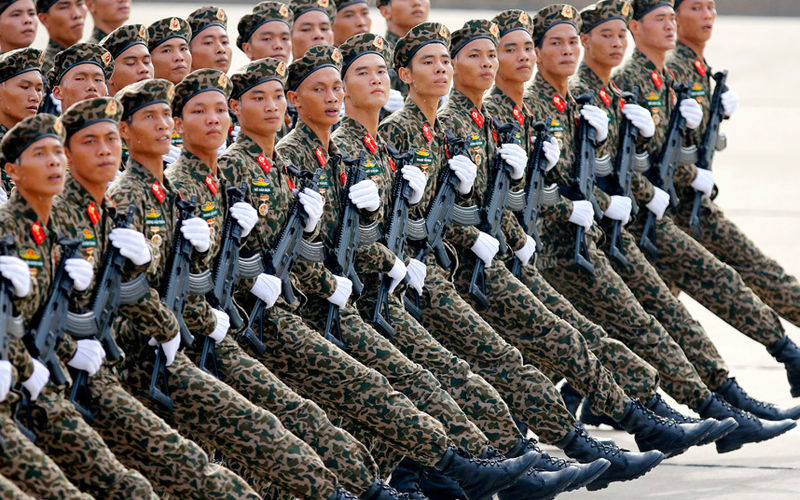
With China increasing the pressure both on land and at sea, Vietnam is facing a hard choice: should it continue its maritime tilt adopted since the early 2000s or should it pivot back to the land like it did throughout the Cold War years? Recently, I argued that Hanoi should prioritise its land security because, historically, amassing the resources to build and maintain an army and a navy at the same time has proven to be beyond Vietnam’s capacity, and Hanoi has always focused on its land-based threats before thinking about the sea. It kept silent when China annexed the Paracel Islands in 1974, and its response to China’s occupation of the Johnson South Reef in the Spratly Islands in 1988 was weak simply because it was fighting land wars against South Vietnam and the Khmer Rouge as well as China. In the minds of Hanoi’s leaders then, the Paracels and Spratlys didn’t matter to Vietnam’s survival.
In this context of the debate on Vietnam’s grand strategy in the 21st century, Euan Graham and Bich Tran’s response to my argument is a welcome addition. The two authors argue that Hanoi needs to maintain its pivot to the South China Sea because Vietnam’s prosperity is linked to freedom of navigation and abandoning the sea might lead to a Chinese blockade of Vietnamese ports and the deprivation of Vietnam’s offshore economic interests. Importantly, they contend that China’s continental threat to Vietnam is not as grave as its maritime threat and therefore that Vietnam doesn’t have to worry as much about its land security. While that argument makes sense if we look only at Vietnam’s strategic environment over the past 20 years, it doesn’t hold when considering how Vietnam’s land security has directly affected its maritime security and its economic development policies since its establishment in 1945.
Graham and Tran point to an economic origin for Hanoi’s security policies, noting that Hanoi’s export-driven economy is tied to its access to the ocean and that the country’s 21st-century focus on the sea is to protect those economic interests. However, that narrative ignores why Vietnam decided to adopt an export-driven economy under the 1986 reforms known as Doi Moi (restoration) in the first place, and that reason has to do with land security. Hanoi contemplated the idea of economic decentralisation many times, but implementing such a policy during the Vietnam War was politically and economically impossible. After unification, decentralisation was put on the back burner because Vietnam still needed a wartime command economy to support its occupation of Cambodia and large-scale military presence along the border with China.
Only after Vietnam withdrew from Cambodia in 1989 and normalised ties with China in 1991, indicating a fundamental change in its land security environment, did Doi Moi really take off thanks to the lifting of international sanctions and the massive demobilisation of Vietnamese armed forces in service of domestic economic production. Remarkably, Vietnam has lost the Paracel Islands since 1974, but that didn’t hurt its post–Cold War economic growth. Improvements in relations with the West and the foreign investment that followed were the result of Vietnam adopting a friendlier security policy towards its neighbours, not because of a maritime tilt.
In short, Vietnam’s Doi Moi policy and export-driven economy are dependent on secure land borders. The external security environment drives Hanoi’s economic policies, not the other way around as Graham and Tran suggest. As an autocratic state, Vietnam will surely reintroduce a wartime economy again if its land security deteriorates sharply.
While underestimating the land threats, the two authors exaggerate the maritime threats to Vietnam’s security. Although most of Vietnam’s population and infrastructure are concentrated on the coast, an amphibious invasion from the sea is militarily difficult and unlikely. Chinese leaders are aware of the risks of an amphibious invasion of Taiwan, a country much smaller than Vietnam in terms of population and territory. It is illogical for China to take a detour when it can directly attack Vietnam from the north, as it has done a number of times over the past 2,000 years.
Even if China decided to ‘teach Vietnam a lesson’ from the sea, Vietnam could fall back on the mountain ranges in the west, a strategy that the Vietnamese communists used to drive the French and the Americans out of the river deltas. And this strategy further stresses the importance of Vietnam’s land security. Allowing China to wrest Laos and Cambodia from Vietnam would deprive Hanoi of strategic depth. As I have argued elsewhere, the best way for Vietnam to protect its maritime security is to first and foremost ensure it is safe on the land, including both its western and northern borders. China’s occupations of Vietnam’s islands didn’t bleed the country dry, but the presence of Chinese troops along the border did.
Hanoi’s 21st-century maritime tilt is built on successful land security policies from the century before, and it is easy to ignore success on the land and focus on the challenges on the sea. In an ideal situation, Vietnam shouldn’t have to choose between land and maritime security. But as Graham and Tran note, Vietnam’s geography influences its strategic choices. Hanoi should keep asserting its maritime interests to an extent within its means, but its priority has been and will always be on the land.

